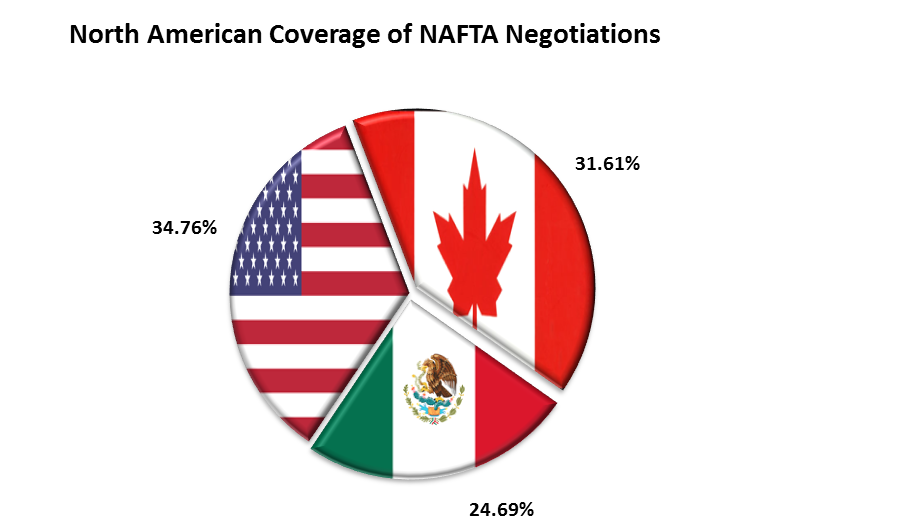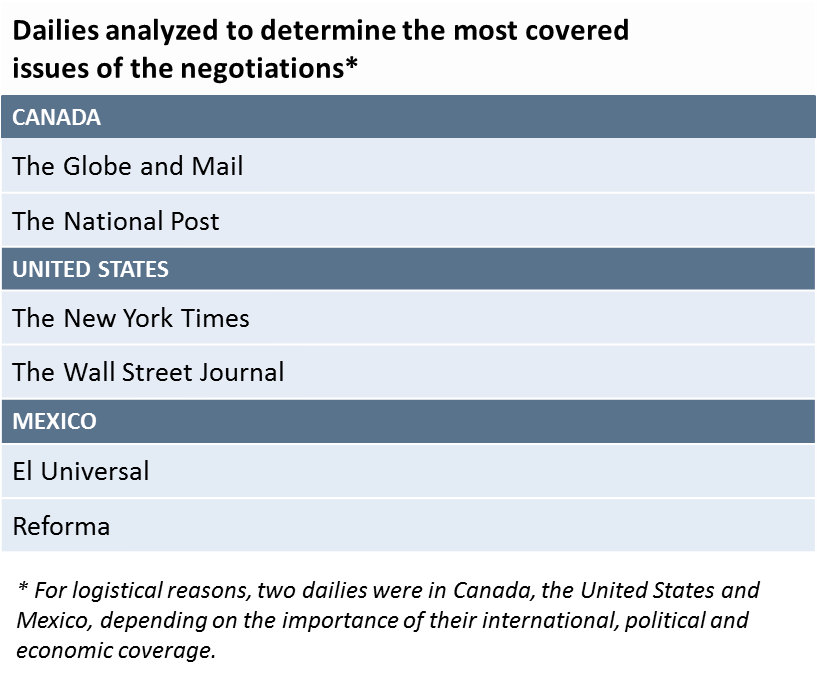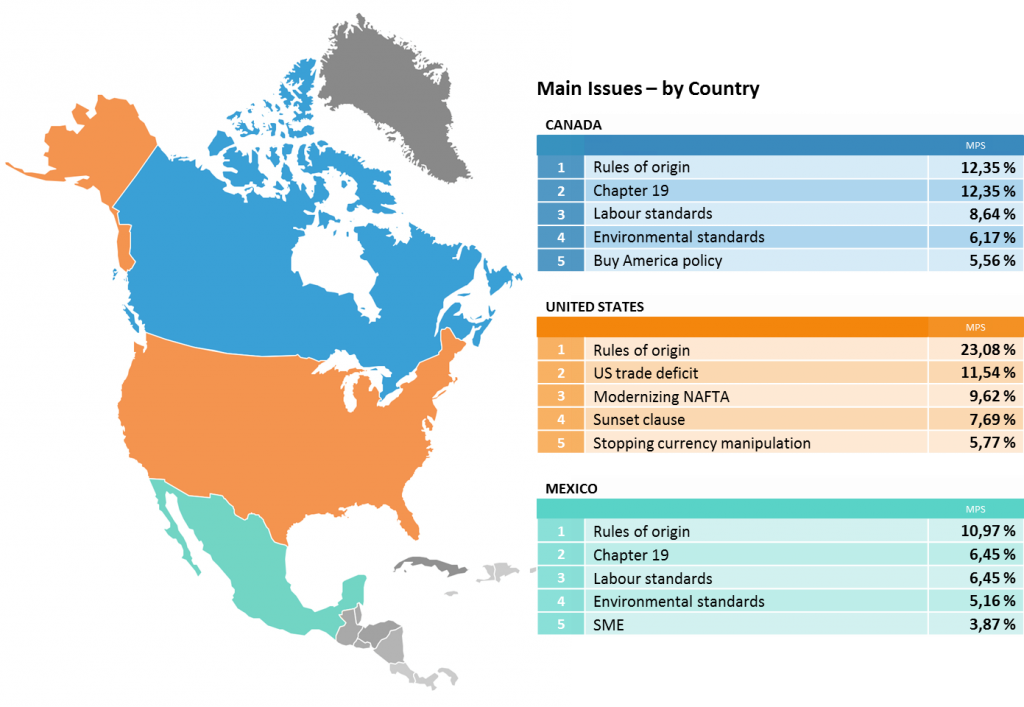The re-opening of NAFTA has been a hot issue this year throughout North America. However, media interest has diverged considerably from one country to another. For example, in Canada, 12.35% of the coverage of the issues focused on Chapter 19 of the current accord (with a similar level for the question of rules of origin), while the American and Mexican dailies analyzed put much greater emphasis on this issue. This dissonance in the media illustrates eloquently the reasons why the negotiations seem to progress at a snail’s pace…
Overview
While Canadian media production is 17 times less than that of the United States, the coverage of NAFTA in Canada was 6% greater than that of American media! Canada thus had 40.54% of the mentions of NAFTA in North America in 2017, versus 34.76% for the United States. At a glance, Canada’s dependence on the United States for exports is the main stimulus for media coverage on the subject. The US should receive about 75% of Canadian exports in 2017 .



Beyond the volume of coverage, major disparities exist in the treatment of the negotiations. This is why Influence has reviewed the articles on the negotiations published during the key periods of the process of re-opening the accord. For logistical reasons, two dailies were chosen at random in Canada, the United States and Mexico.
Main issues and positions: the importance of perspective
Rules of origin
The United States mainly wants to increase the proportion of parts built in North America, and would require that a large percentage are produced in their country, for a car to be exempt from duties under NAFTA. This measure could have a major negative impact on the automobile industry in Canada and Mexico, but would not guarantee the return of jobs in this sector to the United States.
It is not surprising, therefore, that rules of origin was the most heavily covered issue in Canada (12.35%), Mexico (10.97%), and above all in the United States (23.08%).
Chapter 19

Chapter 19 of the current accord provides for binational arbitration committees when one of the signatories wishes to contest the imposition of anti-dumping duties. Canada, having often used this recourse, simply cannot accept for it to be abolished, as the United States wishes.
In English Canada, coverage of Chapter 19 is at the same level as the rules of origin issue
(MPS 12.35%). It is in 2nd place in Mexico (MPS 6.45%), and 6th place in the United States.
The American exception – the trade deficit as a major issue
There is an outlier in the coverage of the issues of the negotiations in the American newspapers analyzed. Among the five issues most covered in each country, only the question of rules of origin is shared by the media of all the countries involved.
While there are some similarities between the issues covered in Canada and Mexico, the American newspapers analyzed paint a very different picture of the negotiations. They give a greater emphasis to the ultimate objective of the American negotiators: to re-balance imports and exports with NAFTA partner countries.
If the differences in the coverage of the main issues of NAFTA in American, Canadian and Mexican newspapers is representative of the distance between the positions of the United States and those of the other partner countries, we may expect very long, even interminable, negotiations…



